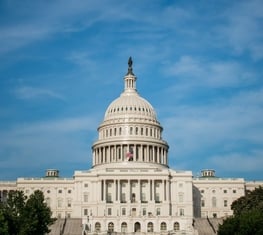Five Years Since Shelby County v. Holder: Where Do We Stand Now?
Shelby County v. Holder was a landmark case addressing the constitutionality of two provisions of the Voting Rights Act of 1965. The two provisions impacted, Section 5—which requires certain states and local governments to obtain federal preclearance (permission) before implementing voting laws or practices; and Section 4(b)—which contains the formula to determine which jurisdictions are subject to preclearance based on their voting discrimination history. The Supreme Court decided on this case in 2013 in a very narrow (5-4) decision (more on what that means later).
What’s the temperature now?Fast forward to 2018, on the litigation front, voting rights attorneys have been busier than ever. Litigation efforts in this space continue to center around voter photo ID, documentary proof of citizenship, redistricting, election protection, and voter purges. This year alone, there are nearly two dozen voting rights cases in federal courts across the country and 6 of those have been appealed to the Supreme Court, with more to come. And with the number of cases being filed across the country, there is no sign of voting rights litigation slowing down. In response to this activity, we continue to press toward the restoration of the Voting Rights Act, and we are also exploring alternatives that accomplish protection for voters nationwide. For a fuller rundown of our ongoing work around the VRA, click here.
The golden nugget of all this activity is that the League, our legal partners and allies get sharper and sharper with each new challenge. Some of the decisions have been tough to come to grips with, but the fact that many of the decisions this term have been narrow majorities—or 5-4— upholding voting rights limitations, it also shows potential promise to change the tide. A narrow decision simply means that the court was split, and a majority was gained through a single vote. This is unlike a situation where the court delivers a 7-2 decision, sending a clear message that the court is firmly planted on a particular side of the law. Put another way, when a decision is narrow like many of the cases this term, it often means that the court itself is struggling to “choose a side” and there is a ripe opportunity for persuasive arguments that could pull that needle either way.
So, where does that leave us?Still vigilantly educating around voting rights, monitoring changes and the implementation of current laws, participating in litigation that makes sense and helps further democracy, and supporting our allies in efforts that further goodwill and coalitions in the communities vital to our work. And how do we do that? Singularly, by Leagues communicating across national, state and local channels about activities related to our core work of voting rights, improving elections, money in politics and redistricting.
The League is stronger together when we cooperate at all levels. We have many resources available at the national office so don’t hesitate to reach out for litigation or legislation assistance. We can assist with engagement letters, strategy on how local litigation fits into our national cadre of work or just to chat through how we can team up to elevate the advocacy and litigation work you are doing.
Sign Up For Email
Keep up with the League. Receive emails to your inbox!
Donate to support our work
to empower voters and defend democracy.




